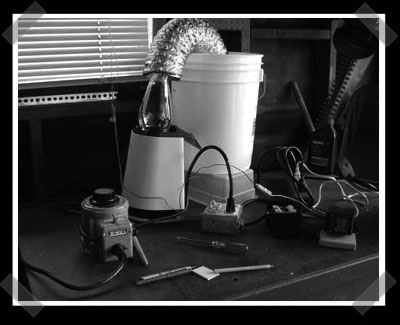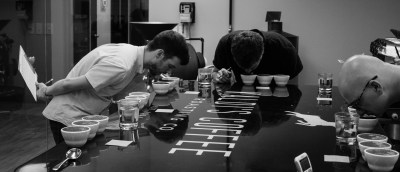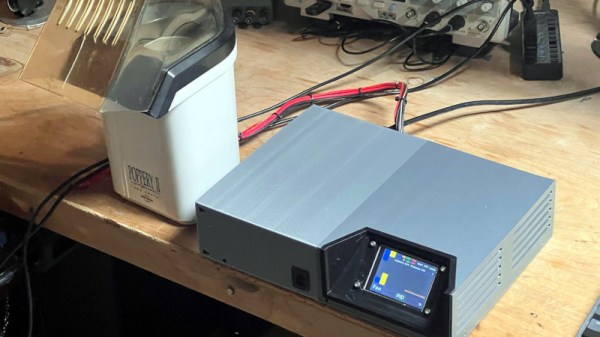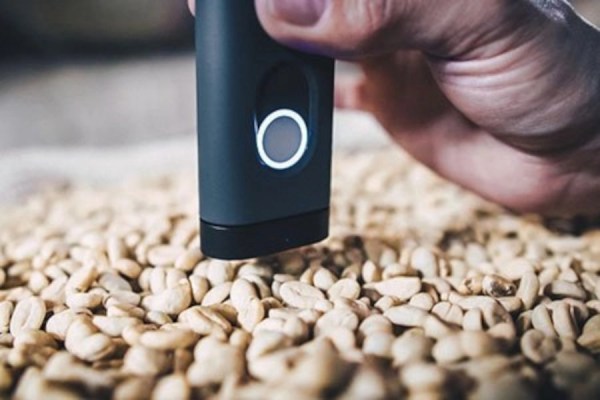
In honor of my espresso machine being fully plumbed in (water supply and drain line!) it’s time for another coffee hack. When I wrote my basic coffee roaster how-to, I seriously thought that I’d never see anyone do this, but [] installed a programmable PID controller on his popper coffee roaster setup. This particular PID can be programmed to ramp the temperature over time to create an actual roasting profile, rather than manually adjusting the set points. The original page was here, but I had to pull it out of the internet archive.
Mecha Turbo Crazy Coffee Roaster

I’m a wee bit of a coffee geek. This roaster was built by [farmroast]. It’s a highly modified of version of the roaster that I’ve been using for the last year or so. A convection oven up top provides the primary heat source, while the beans are spun around in the roast chamber below. A pair of thermocouples let you know what’s going on inside the chamber. When the roast is done, pop the top, dump the beans into the drawer, and a fan mounted below cools them to room temperature in about a minute. It was put up for a home roaster building contest – You might be interested in the other entries.
I hope the coffee wars at defcon are this interesting.
Scrounged Coffee Roaster

I’ve been known to modify an innocent kitchen appliance or two, but Derek Bradford has me beat. Derek is on the third iteration of his ‘uglyroast‘ coffee roaster. Since the nearest Home Depot is a continent away, he’s limited to simple parts and tools. The beans are heated with a gas stove. The second version used an electric fan and a camp stove. The latest one has a dedicated motor and sits over a gas range.
Automated Coffee Bean Roaster

We’ve featured several different ways to roast coffee beans over the years. This is the next logical step. [Nightlife31] shows us how to use an Arduino and a popcorn popper to create a fully automated coffee bean roaster. You’ll have to modify your popcorn machine to be controllable. This means installing your temp sensor and relays. You can see a basic schematic for that in the project page. The rest involves making a fairly simple circuit on an Arduino protoboard attachment. The end result is quite nice. We wouldn’t mind waking up to some freshly roasted coffee beans in the morning. We’ve seen these done with PID controls, and directly controlled by a computer. There’s even this one that has a much more involved build with a convection oven mounted on top instead of a popcorn popper.
Hackaday Podcast 194: FPV Contest, Seven Words, Lots Of Coffee, And Edible Drones
This week, Editor-in-Chief Elliot Williams and Assignments Editor Kristina Panos fumbled through setting up Mumble on Kristina’s new-ish computer box before hitting record and talking turkey. First off, we’ve got a fresh new contest going on, and this time it’s all about the FPVs. Then we see if Kristina can stump Elliot once again with a sound from her vast trove of ancient technologies.
Then there’s much ado about coffee roasters of all stripes, and you know we’re both coffee enthusiasts. We have many words to say about the subject, but none of them are any of the 7+ dirty ones that the FCC would probably rather we didn’t. Finally, we take a look at a bike frame that’s totally nuts, a clock that seemingly works via magic, and a drone made of rice cakes. So find something to nibble on, and check out this week’s episode!
Download the podcast for safe keeping.
Check out the links below if you want to follow along, and as always, tell us what you think about this episode in the comments!
Continue reading “Hackaday Podcast 194: FPV Contest, Seven Words, Lots Of Coffee, And Edible Drones”
Pop Your Way To A Fresh Roast Coffee
The preparation and consumption of coffee has become something of an art from in our community, with many people going to extravagant lengths to achieve the perfect cup. [Eric Sorensen] was keen to roast his own beans, but given the price of a dedicated roaster, instead made his own using a hot air popcorn popper.
The story unfolds in several parts, and starts with disabling the thermal cutout on the popper to be replaced with thermal sensors. An Arduino controls both the fan and the heating coil to regulate and vary the roasting temperature over time. Perhaps it’s the software and user interface that most makes this project shine, with a graphical interface on a 320 by 240 pixel touch screen, and a graphing profile interface more reminiscent of a reflow oven than a kitchen appliance. The whole thing is neatly packed away with its power supply in a slimline case, and while we’re no bean experts, we appreciate the uniform brown of the finished product.
Coffee roasters have appeared here numerous times over the years. One of the more recent was this wobble disk design.
Coffee Cupping Is A Grind — Spectroscopy Could Brew Better Beans
If you’ve ever bought whole coffee beans, chances are good that there was all kinds of information on the bag that led to your decision, like the origin, the roast type, and the flavor notes. Traditionally, coffee grading — that’s judging the aroma of both dry and wet grounds and slurping the coffee evenly across the tongue to determine the flavor profile — is done by humans in a process called cupping. To call it a process is too clinical — it’s really more like a ceremony performed with the grave sincerity that coffee deserves.

There’s an industry standard coffee flavor wheel, so why not leverage that to make a robot that can remove the human bias and possible error of doing things the traditional way? That’s exactly what Demetria, a Columbian-Israeli company is doing.
They’ve developed an AI platform that can determine bean quality as judged by handheld scanners that were born on Kickstarter. The scanner uses near-infrared to look for biochemical markers in the bean, which it uses to match up with a profile backed by the all-knowing coffee flavor wheel.
Demetria is using SCiO scanners and a custom app to judge beans before they’re even roasted, which greatly speeds up the process but makes us wonder how green bean spectroscopy stacks up against roasted beans as judged by humans. You may remember the SCiO, a pocket-sized, connected spectrometer made by Consumer Physics that finally started delivering the goods a few years after funding. If you got your hands on a SCiO, you might like to know that there’s an open project out there to hack them. Sparkfun did a nice, thorough teardown, and it seems to be a well-engineered piece of hardware.
On the one hand, cupping is a tradition and thus may people feel that robbing coffee of this tradition will rob coffee of its soul. On the other hand, cupping is wasteful, as the coffee must be roasted and ground immediately prior to the ceremony and it requires the availability of Q graders who have been trained in the ways of coffee grading.
Want to know more about coffee production? Might as well learn the Retrotechtacular way.
[Main and thumbnail images via Demetria]














